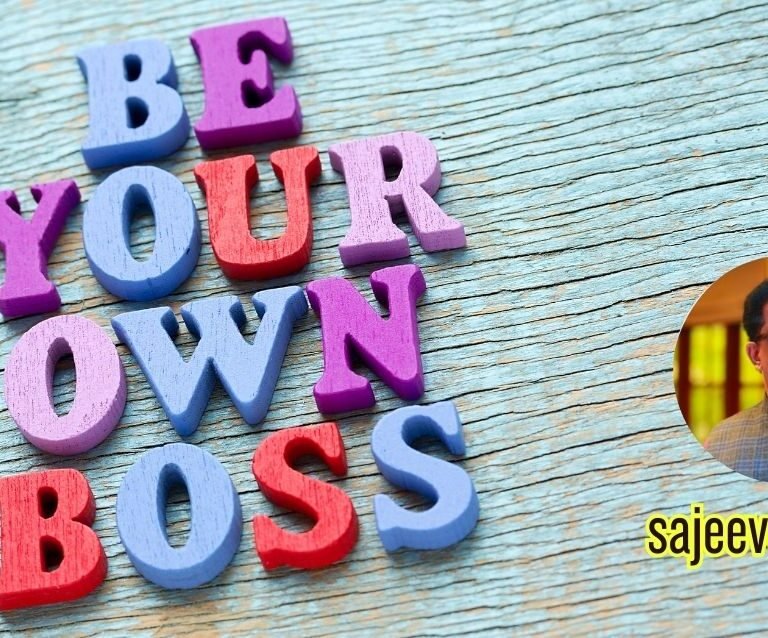Understanding Your Self-Imposed Limitations
Self-imposed limitations are invisible barriers that we place on ourselves, often without conscious realization. These constraints can manifest in various aspects of life, including career, personal relationships, and personal growth. They stem from a myriad of sources such as past experiences, societal expectations, and deeply ingrained internal fears. Recognizing these limitations is paramount in the journey towards unlocking our full potential.
In professional settings, self-imposed limitations frequently appear as a lack of confidence or an aversion to taking risks. This can lead to missed opportunities for advancement or innovation. For instance, one might avoid applying for a promotion due to the belief that they are not qualified, despite evidence of their competence and achievements. This fear of failure or fear of rejection becomes a self-fulfilling prophecy, stalling career progression.
Personal relationships are also susceptible to the impact of these restrictions. Individuals often form negative self-perceptions based on past experiences, such as previous rejections or unhealthy relationships. These perceptions can result in a reluctance to form new connections or to fully engage in existing ones, perpetuating a cycle of isolation and dissatisfaction. Limiting beliefs in this domain can prevent people from experiencing the deep, meaningful connections that contribute significantly to overall happiness and wellbeing.
When it comes to personal growth, the effects of self-imposed limitations can be profound. These restrictions hinder individuals from pursuing new hobbies, learning new skills, or embarking on new adventures. A common example is the inner narrative that one is too old to learn something new, which ultimately curtails the opportunity for growth and enrichment.
Identifying these limitations is the essential first step towards overcoming them. By bringing these hidden barriers into the light, individuals can begin to challenge and dismantle them. Self-reflection and awareness are critical components of this process, allowing for a deeper understanding of the roots and ramifications of these limitations. Once identified, proactive strategies and interventions can be employed to break free from these constraints, paving the way for a future filled with potential and possibilities.
The Power of Mindset: Transforming Your Thoughts
In the realm of personal development, understanding the power of mindset is fundamental to breaking free from limitations and realizing one’s full potential. The concepts of a fixed versus a growth mindset play a pivotal role in shaping our perceptions and, consequently, our actions. Carol Dweck, a renowned psychologist, has extensively researched these paradigms. She articulates that a fixed mindset believes in static intelligence and abilities, while a growth mindset embraces the idea that talents can be honed through dedication and hard work.
Psychological studies highlight how these thought patterns significantly influence our behaviors and outcomes. Individuals with a fixed mindset often avoid challenges, give up easily, and perceive effort as fruitless. Conversely, those with a growth mindset view challenges as opportunities to develop, persist in the face of setbacks, and see effort as a pathway to mastery. This shift in thinking can transform one’s trajectory, facilitating the pursuit of goals that once seemed insurmountable.
Transforming your mindset from fixed to growth-oriented involves practical strategies grounded in cognitive psychology. One effective technique is the use of affirmations. Regularly repeating positive statements can build new thought patterns that counteract limiting beliefs. For instance, affirmations like “I am capable of learning and improving” can rewire your brain to embrace growth.
Visualization is another potent tool. Athletes and high achievers frequently employ this technique, mentally rehearsing their successes to build confidence and reduce performance anxiety. Visualization helps create a vivid, compelling mental image of achieving goals, reinforcing a growth mindset.
Cognitive re-framing is also essential. This strategy involves identifying and challenging negative thoughts, replacing them with more positive, constructive ones. By recognizing that setbacks and failures are part of the learning process rather than indicators of inherent ability, individuals can foster resilience and ongoing development. This approach not only cultivates a growth mindset but also enhances emotional regulation and problem-solving skills.
Ultimately, adopting a growth mindset is about transforming your thoughts to unlock new possibilities. By integrating affirmations, visualization, and cognitive re-framing into your daily routine, you can gradually shift your mindset, allowing you to break free from limitations and reach your full potential.
Setting Ambitious Yet Realistic Goals
Setting goals is fundamental to pushing past personal limitations and achieving one’s full potential. To effectively challenge oneself, it is crucial to establish ambitious yet realistic objectives that encourage progression without leading to discouragement. The SMART framework—Specific, Measurable, Achievable, Relevant, and Time-bound—provides a reliable structure for setting such goals.
First, goals should be Specific, allowing for a clear understanding of what is to be achieved. Ambiguity can lead to confusion and, ultimately, failure to meet objectives. For instance, rather than setting a vague goal like “improve fitness,” a more specific alternative might be to “run a 5K in under 30 minutes.”
Second, goals need to be Measurable to track progress and stay motivated. Measurable goals provide tangible evidence of improvement and success. For example, setting a measurable goal such as “increase monthly sales by 10%” allows for the assessment of growth over time.
Third, goals must be Achievable. While it is essential to aim high, setting goals that are currently achievable ensures steady progress without overwhelming stress. An achievable goal takes into account one’s current resources, capabilities, and constraints. For instance, if your long-term goal is to write a book, an achievable milestone might be to complete one chapter per month.
Fourth, goals should be Relevant to your overall objectives and personal or professional growth. Relevant goals align with broader aspirations, making them more significant and motivating. For example, if ultimate career growth is the aim, a relevant goal might be to gain a new certification that aligns with your industry.
Finally, goals need to be Time-bound. Setting deadlines creates urgency and encourages consistent progress. For example, setting a goal to “launch a personal blog within three months” provides a clear timeline and a sense of urgency.
Breaking larger goals into smaller, manageable tasks can help build momentum and confidence. Suppose your overarching goal is to complete a marathon. You could break it down into monthly objectives, such as running shorter distances more frequently in the initial months, gradually increasing the mileage, and incorporating strength training and nutrition plans. These smaller milestones make the overall goal less daunting and more achievable, keeping you motivated throughout the journey.
The essence of goal-setting is to extend beyond our perceived limitations while maintaining a practical scope. By adhering to the SMART criteria and breaking down larger goals into manageable tasks, one can effectively push personal boundaries and unleash their full potential.
Embracing Failure as a Learning Tool
Failure often carries a negative connotation that can inhibit personal and professional growth. The fear of failure can be a powerful barrier, preventing individuals from taking risks and exploring new opportunities. However, when one views failure through a different lens, it can become an invaluable learning tool, essential for unleashing full potential.
Reframing failure as an inevitable step towards success is crucial. Many successful individuals have demonstrated that failures are not endpoints but rather crucial moments of learning. For example, Thomas Edison famously remarked on his experience inventing the lightbulb: “I have not failed. I’ve just found 10,000 ways that won’t work.” This mindset allowed him to persevere until he achieved groundbreaking success. Similarly, J.K. Rowling faced numerous rejections before “Harry Potter” became a global phenomenon, transforming her failures into a narrative of resilience and triumph.
The fear of failure can act as a significant limitation because it encourages a comfort zone mentality, deterring individuals from exploring their full capabilities. By altering one’s perspective on failure, this fear can be mitigated, enabling more robust personal and professional growth. Embracing failure as a natural and essential part of progress allows individuals to experiment, innovate, and ultimately achieve greater levels of success.
Analyzing failures to extract valuable lessons and insights is a skill that can significantly enhance one’s potential. Start by objectively assessing what went wrong, either through self-reflection or by seeking constructive feedback. Understanding the underlying causes of a failure helps in identifying areas for improvement and avoiding similar pitfalls in the future. Techniques such as journaling, conducting post-mortem analyses, and seeking mentorship can aid in this process, offering clarity and direction for future endeavors.
Emphasizing a growth mindset is vital. This mindset views abilities and intelligence as qualities that can be developed through dedication and effort. By embracing failures and consciously learning from them, individuals can fuel their personal and professional development, unlocking greater potential and achieving remarkable success.
Building a Support System
Achieving your full potential often requires more than just individual effort; it hinges on the strength of your support system. A robust network of friends, family, mentors, and professional connections can play a critical role in overcoming limitations and fueling personal growth. These relationships offer encouragement, sage advice, and accountability, which are indispensable as you strive to break free from self-imposed constraints.
Family members and close friends form the cornerstone of any strong support network. They understand you best and can provide emotional sustenance during challenging times. Open communication with them about your goals and obstacles ensures you receive targeted support where it’s most needed. For example, an understanding family member may help by taking on household responsibilities, allowing you more time to focus on your ambitions.
Mentors offer a different kind of support, one steeped in experience and wisdom. A mentor can guide you through complex decisions, provide valuable insights, and help you avoid common pitfalls. Whether it’s a teacher, a coach, or a seasoned professional in your field, mentors can facilitate your journey with practical advice grounded in real-world experience.
Professional networks extend your support system beyond the personal sphere. Engaging with colleagues, joining industry groups, and participating in community events can open doors to new opportunities and broaden your perspective. Professional relationships can also offer accountability through shared goals and benchmarks, helping you remain focused on your objectives.
To seek out and nurture these valuable relationships, begin by identifying individuals who demonstrate qualities you admire. Initiate sincere conversations and show genuine interest in their experiences and advice. Strengthen these connections by contributing positively to the relationship; support is reciprocal. Attend events, join groups, and network both online and offline to cultivate a diverse, robust support network. Remember that meaningful relationships are built over time, requiring patience, commitment, and mutual respect.
Practicing Resilience and Perseverance
Resilience and perseverance are pivotal in overcoming challenges and achieving long-term objectives. These qualities enable individuals to navigate obstacles, maintain motivation, and stay focused on their goals, even when progress appears slow or setbacks arise. Building resilience fosters a robust mindset, necessary for weathering the storms of life and continuously pushing forward.
A positive outlook forms the bedrock of resilience. Embracing an optimistic perspective allows individuals to view challenges as temporary setbacks rather than insurmountable barriers. This mindset shift is crucial for maintaining a forward momentum and enables one to remain motivated in the face of adversity. Coupled with positivity, practicing self-care is essential. Adequate rest, healthy nutrition, and regular physical activity fortify both the mind and body, ensuring that individuals are well-equipped to handle stress and recover from setbacks swiftly.
Furthermore, maintaining a persistent attitude is paramount. This entails setting realistic goals, breaking them down into manageable steps, and celebrating small victories along the way. Each minor achievement serves as a stepping stone, reinforcing the belief that success is within reach despite the odds. Developing a routine filled with consistent, purposeful actions helps to ingrain perseverance into daily habits. This routine becomes a framework that guides individuals through periods of doubt and frustration, ensuring they remain productive and aligned with their objectives.
Building a support network is another practical way to enhance resilience and perseverance. Surrounding oneself with encouraging and like-minded individuals provides emotional support and fosters a sense of community. Engaging in open conversations about goals and challenges with peers or mentors can offer new perspectives and solutions, reinforcing an individual’s determination.
Ultimately, resilience and perseverance are interlinked qualities that empower individuals to overcome obstacles and persist in pursuing their goals. Through cultivating a positive outlook, practicing self-care, and maintaining a steadfast attitude, one can build the resilience necessary to navigate life’s challenges and unlock their full potential.
The Role of Self-Care in Overcoming Limitations
Effective self-care practices serve as the cornerstone for overcoming limitations. By prioritizing physical, mental, and emotional well-being, individuals can maintain the energy and motivation necessary to transcend personal barriers. Physical self-care, often ignored, is vital in this journey. Regular exercise, for instance, not only keeps the body fit but also releases endorphins, which are natural mood lifters. A study published in the “Journal of Clinical Psychiatry” highlights how a consistent exercise regimen can alleviate symptoms of depression and anxiety, thereby enhancing overall performance.
Mental self-care is equally essential. Practices such as meditation and mindfulness allow individuals to achieve a state of clarity and focus. Research published in “Psychological Science” demonstrates that even short daily meditation sessions can significantly improve attention span and cognitive function. Engaging in hobbies that spark joy and creativity is another form of mental self-care. Whether it is painting, reading, or gardening, these activities provide a necessary break from daily stressors, allowing the mind to rejuvenate.
Moreover, emotional self-care cannot be overlooked. Maintaining healthy emotional habits, such as expressing emotions constructively and seeking support when needed, has a profound impact on one’s ability to overcome limitations. Adequate sleep, for instance, is a critical component of emotional self-care. The National Sleep Foundation points out that a lack of quality sleep negatively affects mood, cognitive performance, and overall health.
By embracing a holistic approach to self-care, individuals can cultivate resilience and enhance their productivity. The synchronization of physical, mental, and emotional well-being creates a balanced life, empowering individuals to break free from limitations and achieve their full potential.
Celebrating Your Achievements and Progress
In the journey of personal growth, celebrating your achievements, no matter how small, plays a pivotal role in building confidence and maintaining a positive mindset. Recognizing the milestones you reach helps to reinforce your commitment to self-improvement and allows you to see tangible evidence of your progress. Acknowledging these successes is not merely an act of self-congratulation but a strategy to enhance your overall motivation.
To make this practice effective, consider maintaining a journal where you can document your milestones. By writing down your accomplishments, you create a record that you can look back on, which can be particularly uplifting during challenging times. This reflective practice aids in recognizing patterns of success and areas for further improvement. Sharing milestones with a supportive network—such as friends, family, or a professional group—can expand the sense of accomplishment and foster a community of encouragement around you.
Additionally, rewarding yourself with meaningful treats can serve as a powerful incentive. These rewards do not have to be extravagant; they can be as simple as taking a day off to relax, treating yourself to a favorite meal, or indulging in a hobby you love. The key is to choose rewards that hold personal significance and provide genuine satisfaction, thus making the achievement feel more impactful.
Reflecting on your progress regularly is crucial to staying motivated. Taking time to assess how far you have come helps to reframe your mindset, shifting the focus from what remains to be done to what has already been accomplished. This optimism can be a driving force that propels you forward, ensuring that you stay inspired and determined to continue working toward unleashing your full potential.









